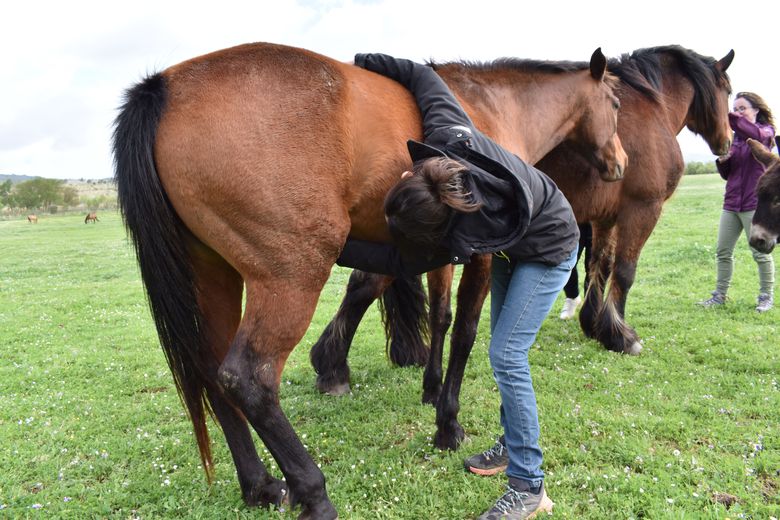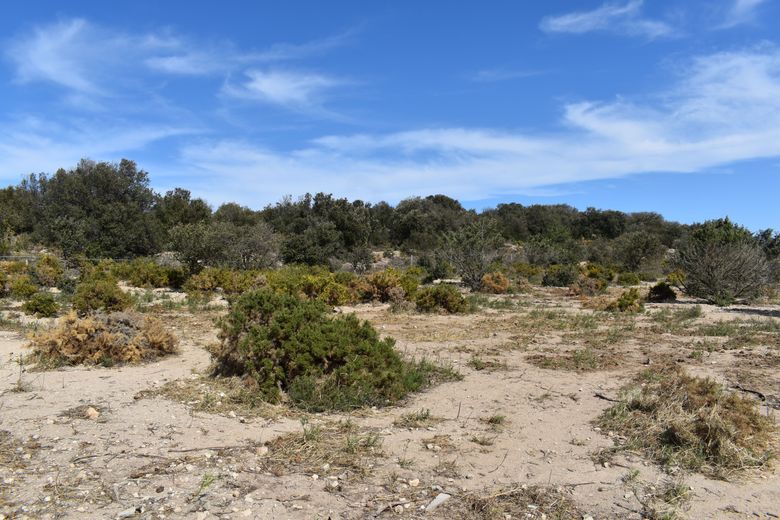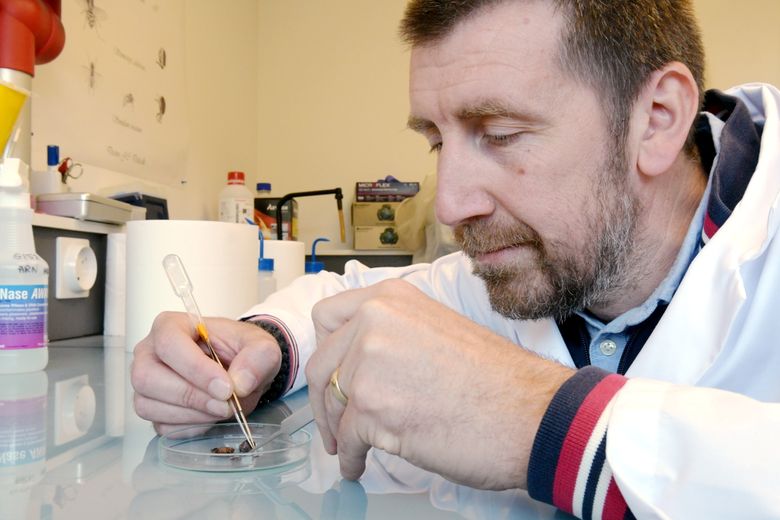Nearly ten years after a first report in Occitania, Hyalomma marginatum, the “striped-legged” tick, also called “giant tick”, is settling in the region. Scientists from CIRAD and INRAE have been tracking it on farms for several weeks to measure the phenomenon. With new data: since the report of parasites carrying the Crimean-Congo hemorrhagic fever virus last year in the Pyrénées-Orientales, the disease, endemic in Africa, Asia, and the Middle East, could appear in France.
It is large (8 mm), is armed with a spur, a “rostrum” for the scientists who study it, is carried by two-colored legs decorated with whitish rings at the joints, lives in scrubland on the Mediterranean coast. Montpellier researchers are following her trail. Last October, for the first time in France, the Crimean-Congo Hemorrhagic Fever (CCHF) virus was detected in specimens of Hyalomma marginatum, the “striped-legged tick”. The mites had been collected from cows and horses in the Pyrénées-Orientales.
While no cases of transmission to humans are documented, the condition, similar to Ebola, is potentially serious.
For several weeks, scientists from Cirad and Inrae and the University of Montpellier have been back in the field: looking for Hyalomma marginatum, but also Ixodes ricinus, another species of tick rather present in the north and west of the region, which transmits Lyme disease, “we do not find it in Hérault, nor Gard, nor Aude or the Pyrénées-Orientales”specifies Thierry Pollet, epidemiologist researcher attached to Inrae, associated with Cirad and the ASTRE mixed research unit of the University of Montpellier in the “Vectors” collective, from his laboratory on the Baillarguet campus, north of Montpellier .

On the other hand, the teams track Dermacentor marginatus, a vector of animal diseases, notably equine piroplasmosis, which exhausts and, sometimes, kills the infected animal.
“Ticks collected from horse and cattle breeders are being analyzed”, indicates the scientist. Spring is the most favorable season for observations: “This is where the ticks come into activity, the missions continue until July and August.”
“We talk a lot about mosquitoes, but ticks are also a public health problem”
Will the samples confirm the circulation of the CCHF virus in France? Monitored since 2015 by a CIRAD team in Montpellier, the evolution of the tick population is worrying: “It poses serious risks to both human and animal health.“, indicates the research institute.

Beyond Lyme borreliosis, the best-known tick-borne disease cited by 8 out of 10 French people, which affected 47,000 people in France in 2021 according to Public Health France.
A “hunting” tick
Ticks develop in three phases, from larva to nymph to adult. Once engorged with blood, the tick can multiply its weight up to 100, whatever the species: Ixodes ricinus, Hyalomma marginatum, Dermacentor marginatus… and the classic dog tick, Rhipicephalus sanguineus.
To find a host, the parasite has several strategies. Ixodes ricinus, explains Thierry Pollet, “is on the lookout, on a twig of grass. A hunter, it is sensitive to variations in CO2 and vibrations of the ground. It stays ready and runs to attach itself to its host”.
To go unnoticed, the tick spits out, while pumping blood, saliva filled with anesthetics and anticoagulants. It is in this saliva that the pathogens transmitted to its host are present.
On the scale of Occitania, and even more so in the future with climate change, it is above all the risk of human cases of CCHF appearing in France which is worrying. The “striped-legged” tick, unlike Ixodes ricinus, is found mainly in forests where it finds favorable humidity, “likes the dry Mediterranean climate and scrubland areas”.

“We talk a lot about mosquitoes, but on a European scale, ticks are also a medium-term public health problem”, indicates Thierry Pollet. In Spain, the first reports of transmission to humans were documented in 2016. Since then, the country has recorded “two or three cases per year”.
In France, it is “a whole network of actors” which is mobilized, with breeders on the front line, but also environmental associations, hikers…
“We must not panic”
Harmless to animals (the horses and cattle that it colonizes do not have symptoms), Ixodes ricinus can cause more or less serious cases of infection: “We must not panic”nuance Thierry Pollet.

“In the vast majority of cases, nothing happens. Lyme borreliosis is only present in 10 to 15% of Ixodes ricinus”. And “even if the tick carries the bacteria, there is only a 10% risk that it will transmit it. If we remove it within 24 hours, most likely nothing will happen.”
What if the giant tick transmits the CCHF virus?“it may be nothing at all”. But the most vulnerable, and particularly immunocompromised people, are at risk.
After a walk, “you must always inspect yourself”, before, “it is more prudent to protect yourself”
How to avoid being bitten by a tick, or limit the risk of infection if necessary?
“If Hyalomma marginatum bites you, you have an immediate risk of infection, but for Ixodes ricinus, which transmits Lyme disease, it is possible to avoid it for 24 hours,” says the scientist.
To avoid taking any risks, “you must always inspect yourself” after an outing, mainly “behind the ears, at the base of the neck, between the toes, at the bend of the knees, in the groins, under the armpits”. And the examination must be repeated “for 48 hours”.
When you go for a walk, even in summer, “you must not go in shorts and flip-flops”: “You must wear pants, high-top shoes and socks that avoid leaving your skin exposed and cover your arms.”
Rather “wear “light clothing” which allows you to spot a tick too.
The presence of a tick should not cause panic, and Thierry Pollet would not want people to “prevent themselves from going into the forest”: “If you spot one, you should remove it with a tick remover if you have one, or turn the tick with the gesture of unscrewing, to prevent its harpoon from remaining in the body. Only then should the bite be disinfected. Then “observe yourself for two to three weeks”. Suspected Lyme disease is manifested by erythema migrans, a red patch. A CCHF infection will cause “flu-like symptoms.” You should then consult a doctor.
Finally, what to do with the beast? “Rather than crushing it and throwing it away, you should report it on the application CITic“, a participatory research program to which it can be addressed. This consultation between professionals and citizens is also at the origin of a board game, “GoTicks” published by the Montpellier company Bioviva.

